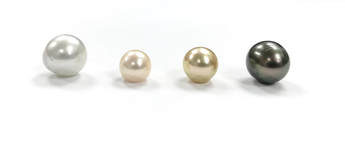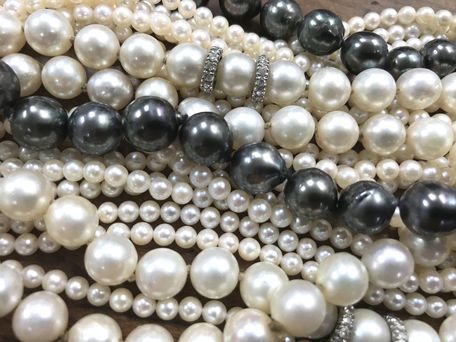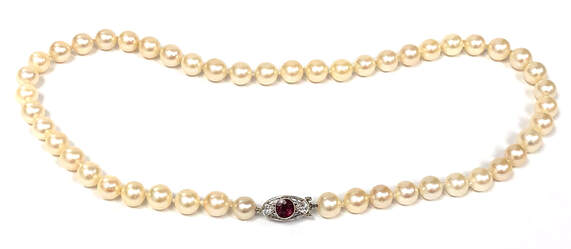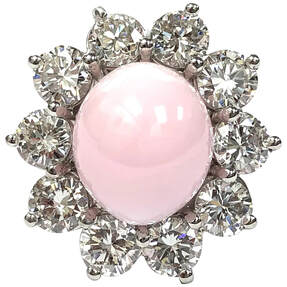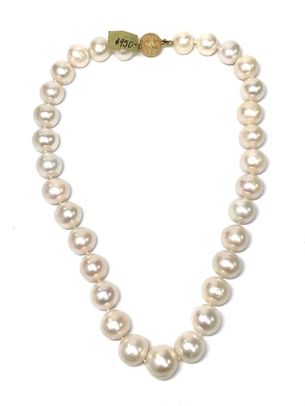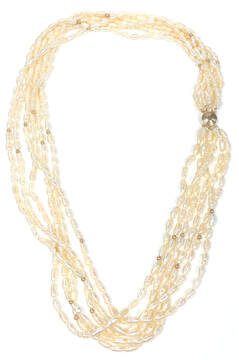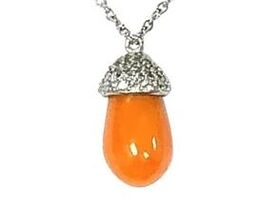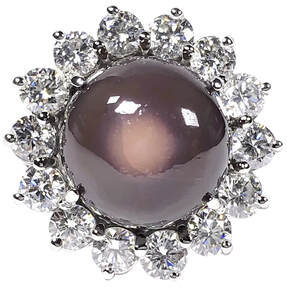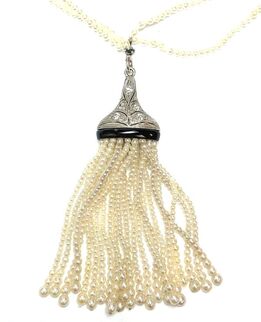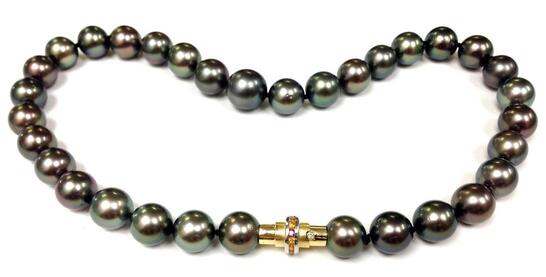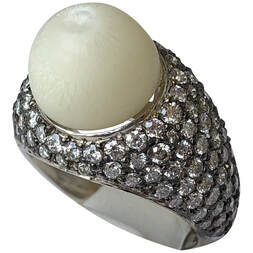PEARL
|
Species: Pearl (or Cultured Pearl)
Mohs Hardness: 2.5 to 4.5 out of 10 Color: Can be almost any color, but usually white or light yellow, and body color can be modified by pink, green or blue overtones. RI: 1.350 to 1.685 (+0.009 / -0.005) Birefringence: 0.155 (use birefringence blink method) SR/DR/AGG: Too opaque to test Spectrum: Not diagnostic Fluorescence: Varies. Inert to strong light blue, yellow, green or pink under LW and SW. SG: Saltwater - 2.61 to 2.85, Freshwater - 2.66 to 2.78 (few over 2.74) |


